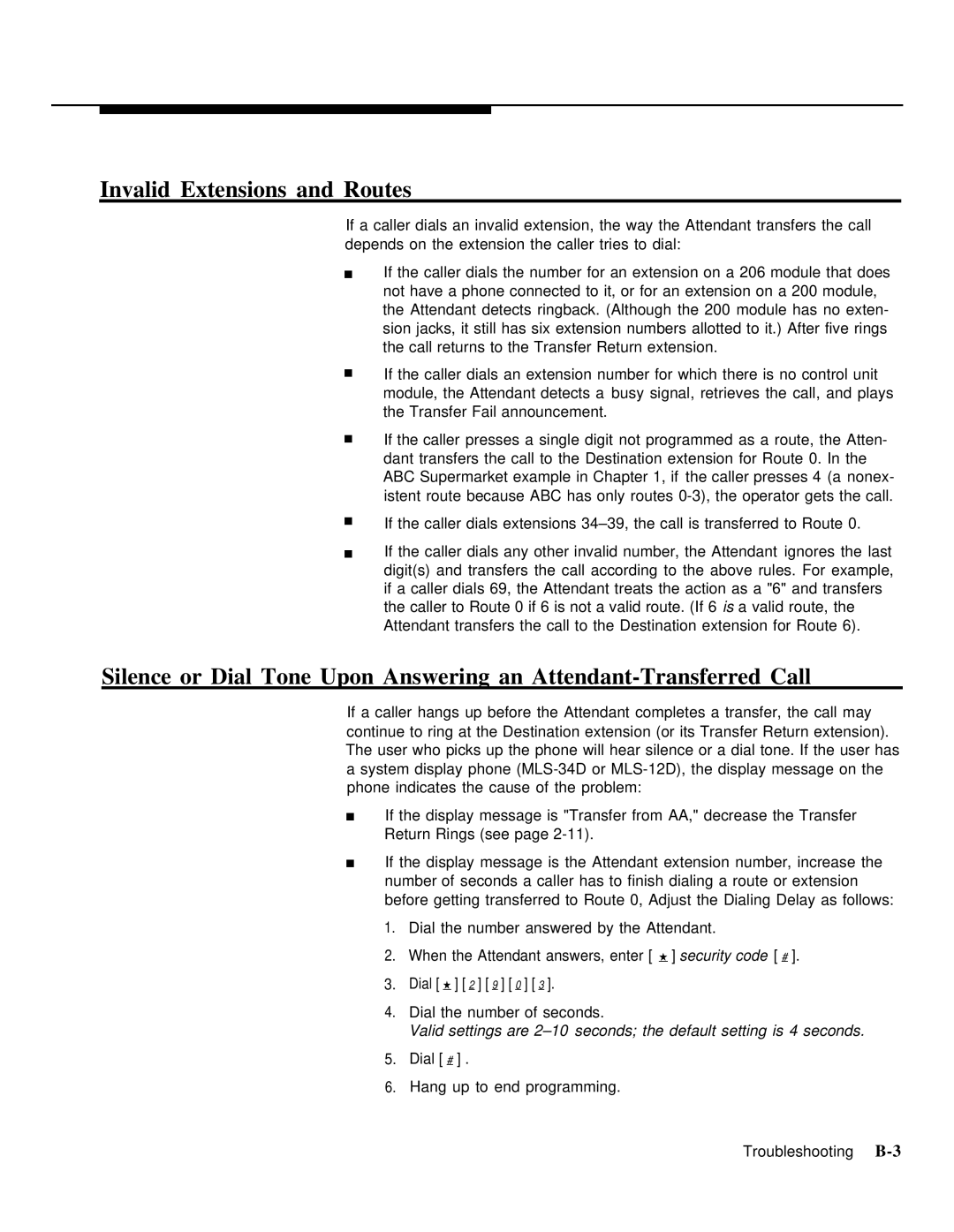
Invalid Extensions and Routes
If a caller dials an invalid extension, the way the Attendant transfers the call depends on the extension the caller tries to dial:
■If the caller dials the number for an extension on a 206 module that does not have a phone connected to it, or for an extension on a 200 module, the Attendant detects ringback. (Although the 200 module has no exten- sion jacks, it still has six extension numbers allotted to it.) After five rings the call returns to the Transfer Return extension.
■If the caller dials an extension number for which there is no control unit module, the Attendant detects a busy signal, retrieves the call, and plays the Transfer Fail announcement.
■If the caller presses a single digit not programmed as a route, the Atten- dant transfers the call to the Destination extension for Route 0. In the ABC Supermarket example in Chapter 1, if the caller presses 4 (a nonex- istent route because ABC has only routes
■If the caller dials extensions
■If the caller dials any other invalid number, the Attendant ignores the last digit(s) and transfers the call according to the above rules. For example, if a caller dials 69, the Attendant treats the action as a "6" and transfers the caller to Route 0 if 6 is not a valid route. (If 6 is a valid route, the Attendant transfers the call to the Destination extension for Route 6).
Silence or Dial Tone Upon Answering an
If a caller hangs up before the Attendant completes a transfer, the call may continue to ring at the Destination extension (or its Transfer Return extension). The user who picks up the phone will hear silence or a dial tone. If the user has
asystem display phone
■If the display message is "Transfer from AA," decrease the Transfer Return Rings (see page
■If the display message is the Attendant extension number, increase the number of seconds a caller has to finish dialing a route or extension before getting transferred to Route 0, Adjust the Dialing Delay as follows:
1.Dial the number answered by the Attendant.
2.When the Attendant answers, enter [ ★ ] security code [ # ].
3.Dial [ ★ ] [ 2 ] [ 9 ] [ 0 ] [ 3 ].
4.Dial the number of seconds.
Valid settings are
5.Dial [ # ] .
6.Hang up to end programming.
Troubleshooting
